Looking for clear answers to your espresso questions? This comprehensive Espresso FAQs guide covers everything from espresso dose and pressure to taste, extraction issues, and common troubleshooting—so you can brew with confidence and never need to search elsewhere. Whether you’re new to espresso or refining your technique, you’ll find expert-backed insights and practical tips right here.
Espresso Basics
What is the ideal espresso dose?
The standard espresso dose varies by tradition and equipment. Traditionally, a single shot uses 6–7 grams of coffee, while a double shot uses 12–14 grams. However, many modern cafés and home baristas now use 16–20 grams for a double shot, aiming for richer flavor and more control. Consistency in dosing is key—always weigh your grounds for repeatable results. There’s ongoing debate about whether to use volume (ml or ounces) or weight to measure espresso output. Today, most professional baristas prefer using a digital scale to measure output weight for greater accuracy and consistency, rather than relying on volume alone.
Modern double shots often use 16–20 grams of coffee for a 60 ml yield. Traditional Italian shots use 12–14 grams. Adjust dose to taste, but keep it consistent for repeatable results.
How many ml is a double shot of espresso?
A double shot of espresso typically yields about 60 ml (2 fluid ounces) of liquid, though this can vary slightly depending on your machine and preferences. While volume is a common reference, more and more baristas now measure the output by weight for better consistency and control.
Can you use any coffee for espresso?
Technically, you can use any coffee beans for espresso. Traditionally, espresso is made with beans roasted specifically for espresso—usually a medium to dark roast for optimal flavor and crema. However, many specialty coffee shops now explore and offer light-roasted espresso, such as Starbucks’ Blonde Espresso, and single-origin espresso, which often uses lighter roasts for unique flavor profiles.
Can you use regular coffee beans for espresso?
Yes, but results may vary. Espresso-specific beans are roasted and blended to highlight the bold, rich flavors and crema that define espresso. Using regular beans may produce a lighter, less intense shot.
Is French roast good for espresso?
French roast, being a very dark roast, can work for espresso if you enjoy bold, smoky flavors. However, some find it too bitter or charred. Medium or medium-dark roasts are often preferred for a more balanced cup.
Can you get decaf espresso?
Absolutely. Decaf espresso is widely available and can be made using decaffeinated beans without sacrificing flavor or crema.
Espresso Extraction & Equipment
9 bar vs 15 bar espresso: What’s the difference?
Espresso is ideally brewed at 9 bars of pressure, which produces the best balance of flavor, body, and crema. Machines advertising 15 bars or more often use higher pressure because they are compatible with pressurized baskets, which are more beginner-friendly and can help extend the life of vibration pumps. For home machines, 15 bars is very common, and with proper puck preparation, you can still achieve excellent results. We discussed how many bars of pressure you should use for espresso in our brewing guide.
How hot should espresso be?
The optimal brewing temperature for espresso is between 190–196°F (88–91°C) at the group head. In your cup, espresso should be served at 160–165°F (71–74°C) for the best flavor and safety. Preheating your cup and portafilter helps maintain this temperature.
How long is espresso good for in the fridge?
Espresso is best enjoyed immediately after brewing. If you must store it, keep it in an airtight container in the fridge for up to 24 hours. Flavor and crema will degrade quickly, so fresh is always best.
Espresso Taste & Sensory Experience
What does espresso taste like?
A well-made espresso is a harmonious balance of sweetness, acidity, and bitterness. Expect notes of chocolate, nuts, caramel, and subtle fruit. The natural sugars in the coffee bean create a pleasant sweetness, while acidity adds brightness and bitterness provides depth. Not all espresso is just bitter—there’s a wide spectrum of flavors to discover.
Is espresso sweet?
Espresso can be sweet, thanks to the caramelized sugars developed during roasting and extraction. Proper extraction brings out this sweetness, often described as nutty or chocolaty, without overpowering bitterness. Of course, besides sweetness, espresso can also have other flavors—beginners often notice bitterness and acidity as well.
Is espresso acidic?
Espresso naturally contains some acidity, which adds vibrancy and complexity. However, excessive acidity may indicate under-extraction or unsuitable beans. Generally, espresso’s pH is around 4.5–5, making it less acidic than many fruit juices but still perceptible on the palate.
Troubleshooting Common Espresso Problems
Why does my espresso taste sour?
Sourness usually signals under-extraction—water passes through the coffee too quickly, extracting mainly acids. Solutions include using a finer grind, increasing your dose, extending extraction time, or tamping more firmly.
Why does my espresso taste bitter?
Bitterness often indicates over-extraction, where water stays in contact with the coffee too long. Try using a coarser grind, reducing extraction time, or lowering your dose.
Why is my espresso watery?
Watery espresso can be caused by too coarse a grind, insufficient dose, weak tamping, or low pressure. Adjust your grind finer, increase your dose, or tamp more firmly.
Espresso coming out too fast?
Fast-flowing espresso is a sign of under-extraction. Common causes include grind being too coarse, dose being too low, poor tamping, or channeling in the puck. Adjust your grind finer, increase your coffee dose, and ensure even tamping for a slower, richer extraction.
No crema on espresso?
Lack of crema can result from stale beans, low pressure, or improper grind. Use fresh, espresso-roasted beans, ensure your machine reaches 9 bars, and dial in your grind.
Espresso puck is wet?
A wet puck may indicate under-dosing, coarse grind, or low tamp pressure. While not always a problem, a soggy puck can signal extraction issues. Try increasing your dose, grinding finer, or tamping more firmly.
Over-extracted espresso?
Over-extraction happens when water stays in contact with coffee too long, pulling out bitter compounds. Signs include harsh bitterness and dryness. Use a coarser grind, reduce extraction time, or lower your dose.
Bad espresso shot: What went wrong?
Common causes of a bad shot include incorrect dose, wrong grind size, poor tamping, stale beans, or machine issues. Adjust each variable one at a time for consistent improvement.
Advanced Espresso FAQs
Is espresso high in caffeine?
A double shot of espresso (18.5g dose) can deliver up to 222 mg of caffeine, while a 14g double shot yields about 168 mg. Espresso is concentrated, but a standard cup of drip coffee usually contains more caffeine overall due to larger serving size. Also read our espresso caffeine content guide.
If you’re ready to perfect your espresso at home, explore our HiBrew espresso machine collection for reliable, barista-quality results every time. Looking for the right beans? Discover our premium espresso coffee selection to elevate your daily brew.

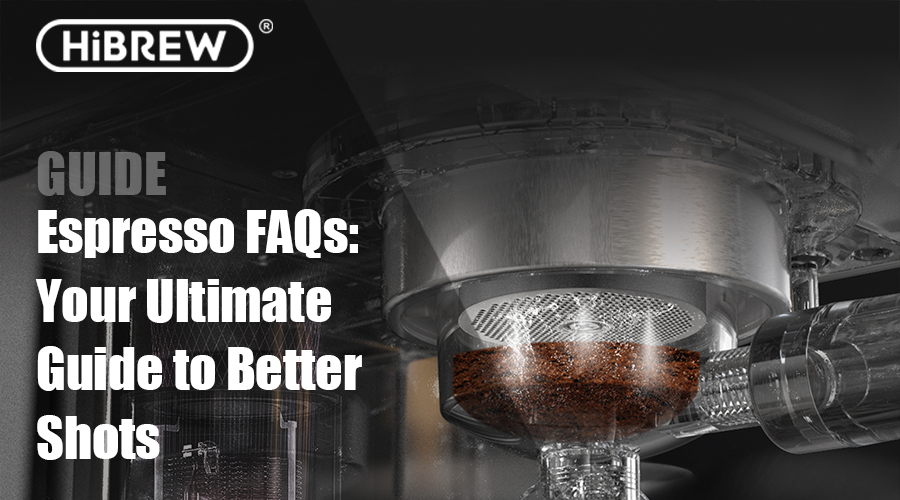

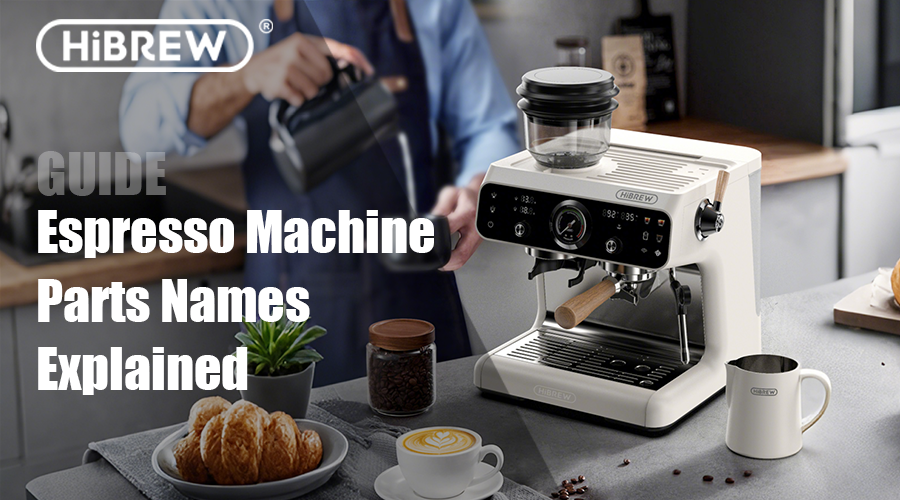
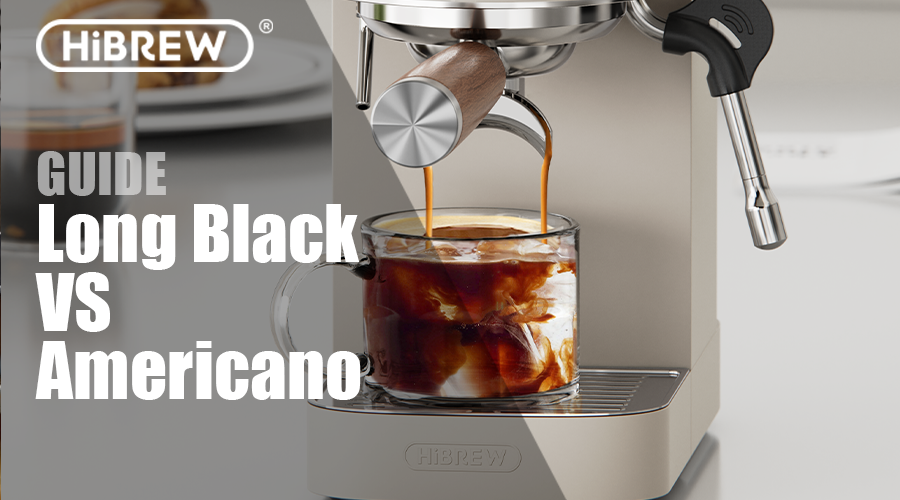
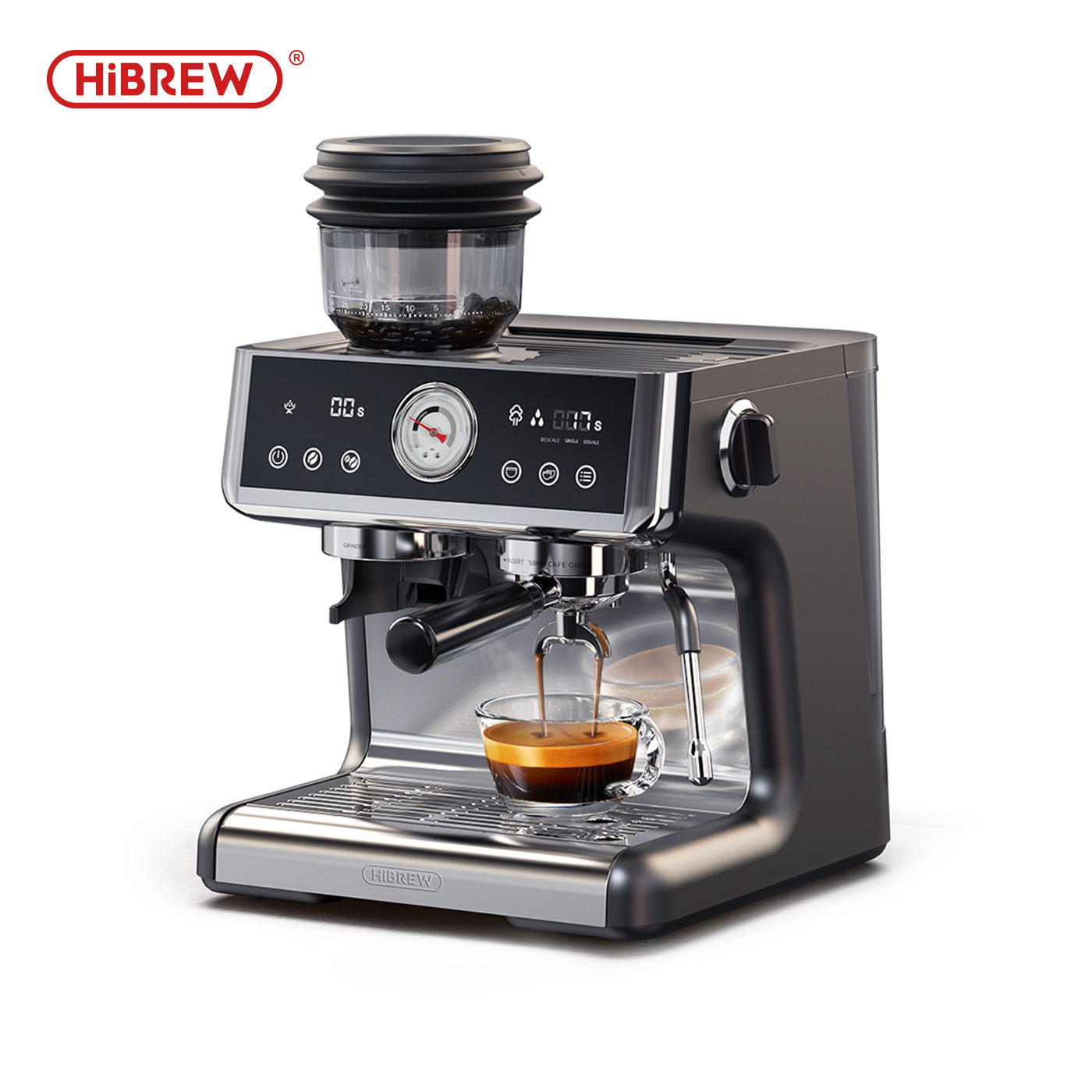
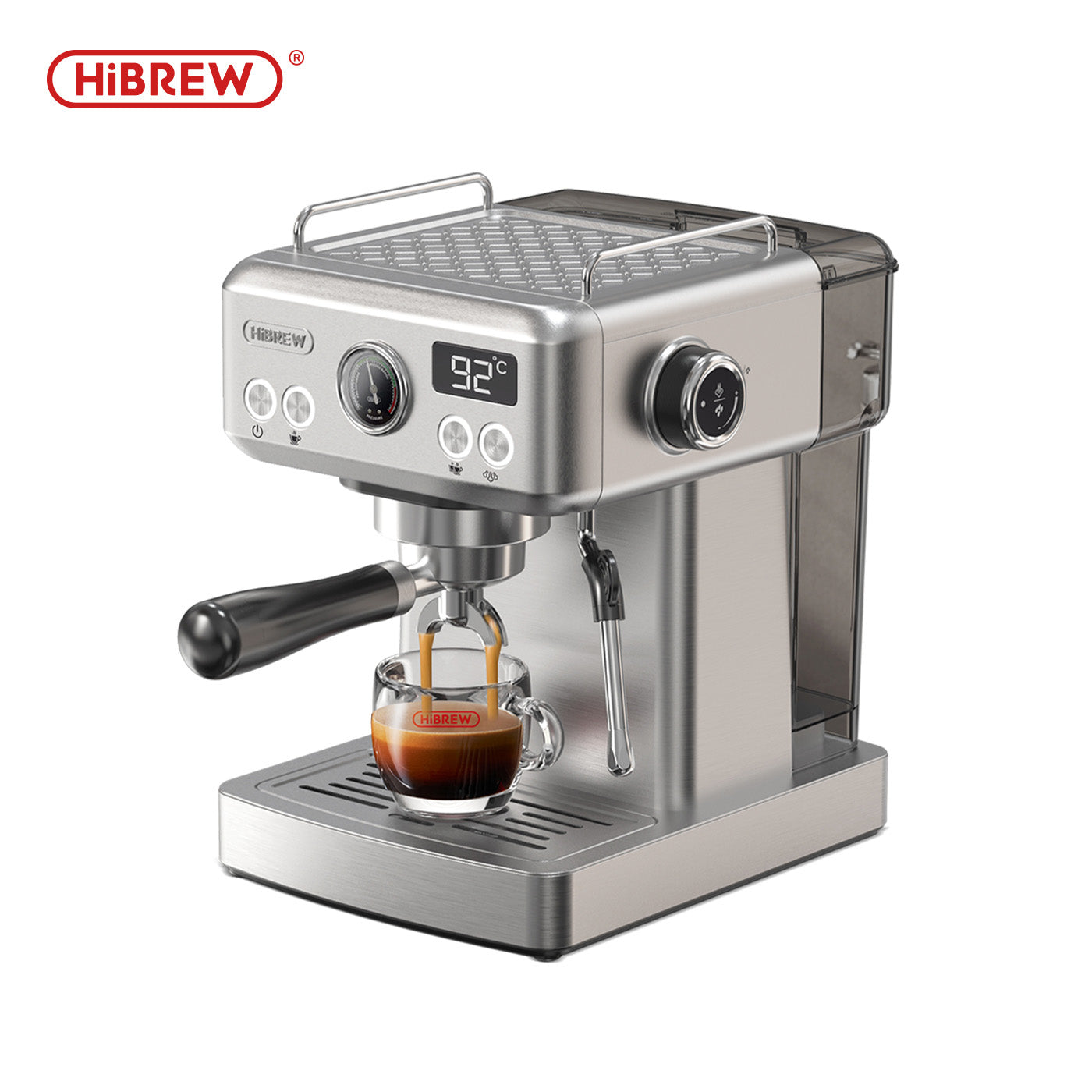

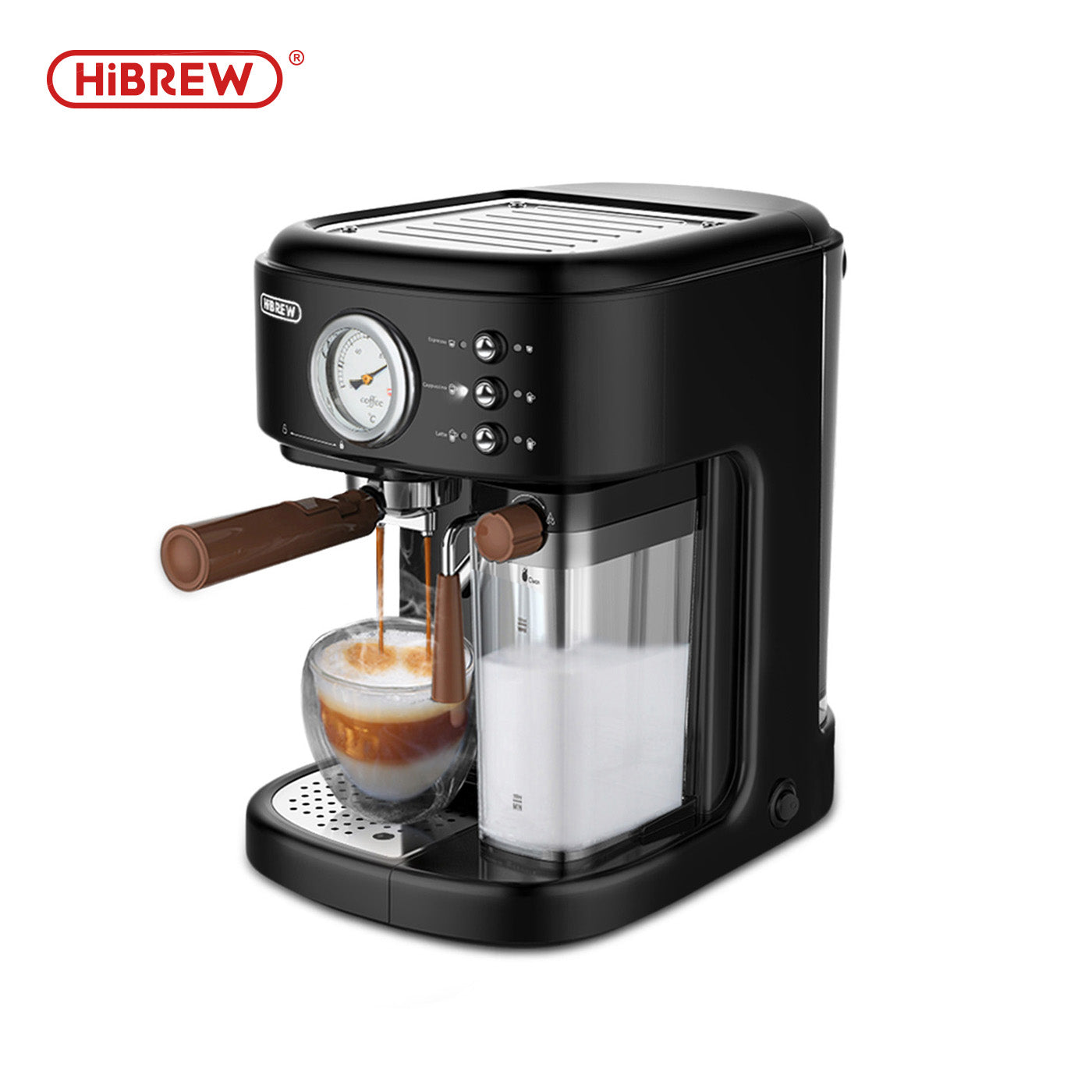
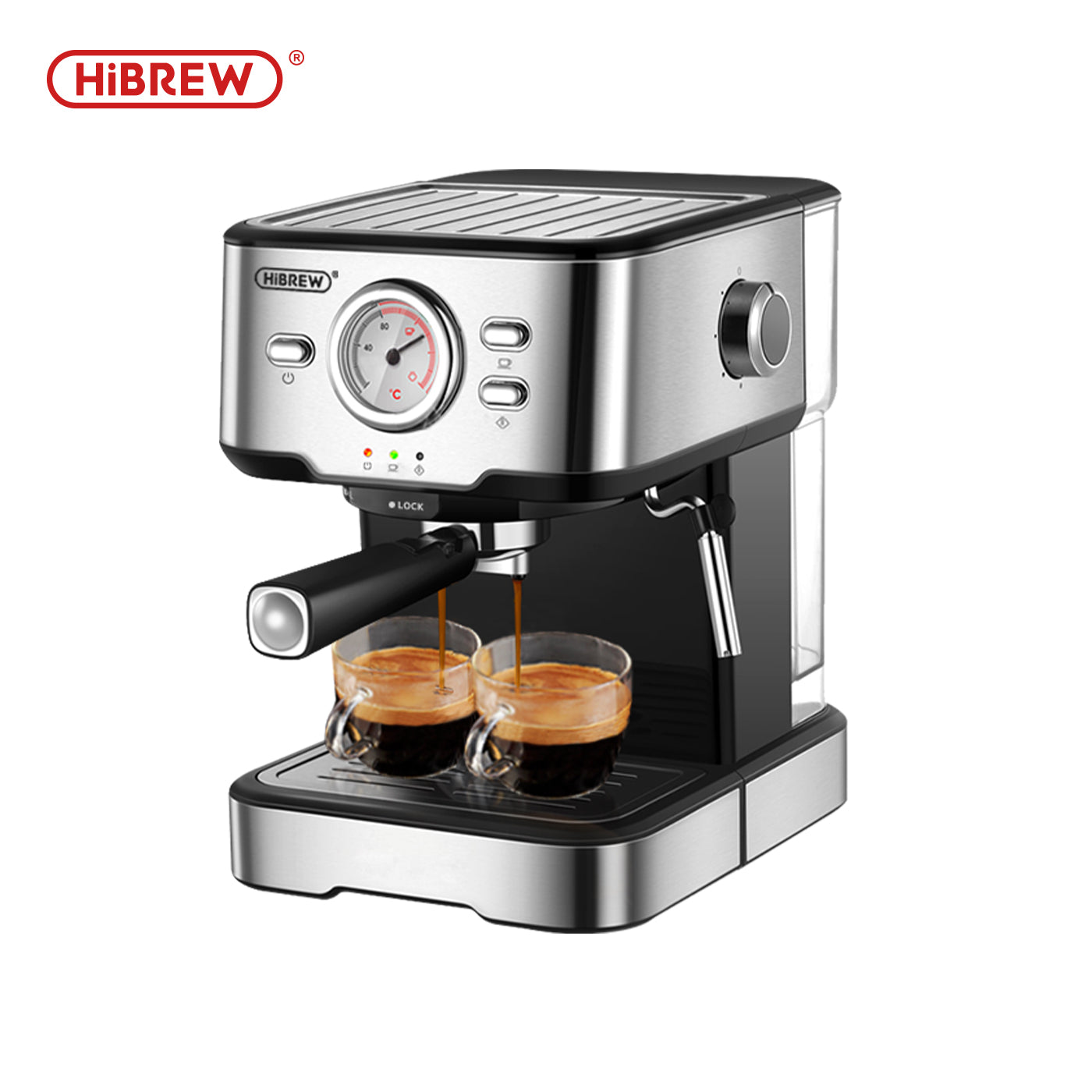
Leave a comment
All comments are moderated before being published.
This site is protected by hCaptcha and the hCaptcha Privacy Policy and Terms of Service apply.